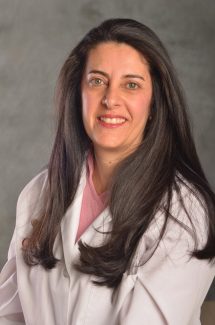Children’s National Health System’s Shireen Atabaki is making waves in health technology with research into pediatric concussions.

American football players (Courtesy Flickr)
Sports fans know the fear of head injuries indefinitely sidelining their favorite athlete. The stress is far worse for parents with children who play sports.
With almost half a million of them visiting hospital emergency rooms annually in the U.S. for traumatic brain injury, a misdiagnosis just adds insult to injury. On top of that, the radiation and price of CT scans only exacerbates a parent’s worries. Ninety percent of children with head injuries have concussions, and while CT scans detect serious bleeding in the brain, they don’t detect concussions at all.

Dr. Shireen Atabaki
Thankfully, Children’s National Health System emergency medical specialist Dr. Shireen Atabaki has spent the last 20 years developing a “near-perfect diagnostic tool for concussion” that reduces the need for CT scans. She’s received recognition for this work including the National Heroes Award for Research by the Maternal Health Child Bureau.
“It’s been estimated that people who get a single CT scan in the first 22 years of life have a 300 percent increase risk of cancer in their lifetime,” Atabaki explains.
“Aside from doing unnecessary testing, what was happening around the country and the world was that kids weren’t being screened for the disease that they actually had, which was usually, after head trauma, a concussion [not a strain or a sprain].”
The health technology Atabaki developed is now in the electronic health record at Children’s Hospital. “It automatically takes doctors to a checklist based on really refined research we’ve done over the years that helps them make a decision,” she says. The checklist includes questions such as, “Do you have a headache, dizziness, sadness, irritability or trouble with sleep?”
They’ve also worked with the Center for Disease Control to come up with mobile apps that start at the time of the nursing triage. A screen pops up when a patient arrives with head trauma and it takes the nurse down a path of screening for concussions. The piloted mobile programs can go home with the kids, Atabaki says, allowing for automatic communication with a school nurse or athletic trainer, reminding a nurse to give the child a modified school day and rest, or not to push them with standardized testing as they’re recovering. Thanks to a grant from the District of Columbia two years ago, Atabaki and her team were able to train 100 percent of the district’s public school nurses and even make a documentary that’s viewable to all on YouTube called, “Play Smart, Your Brain Matters.”
“Our ultimate goal is to get funding to take the mobile app and send daily reminders to the young kids every day, taking them through the concussion checklist,” she explains. The cost-saving potential is huge. Children’s National was able to save more than 0,000 in one year by reducing CT scans by 556.
“If you can get these tools into every electronic health record in every emergency department in the U.
S.,” Atabaki says, “we can have at least a $500 million cost saving in one year of reduced CT scans.”
Awareness has grown appreciably in the last 20 years. We’re increasingly seeing the harm of misdiagnosing or not treating concussions properly. Professional sports players, particularly NFL players, have had a lot to do with that. In 2014,15 former NFL players sued the organization over concussions. Violence and even suicide by football players have been linked to chronic traumatic encephalopathy (CTE), a degenerative brain disease that occurs from repeated concussions. When Aaron Hernandez died at age 27, a posthumous examination of his brain showed that of a player well into his 60s.
These instances showcase how important early recognition of the first concussions are, oftentimes beginning in childhood.
Atabaki remains optimistic. “Sports are great for kids,” she says. “I put all three of my children in sports.
Sometimes you can’t avoid these injuries, so the key is early recognition. Pull your child out and get them the evaluation they need.”
This feature appeared in the December 2017 issue of Washington Life.
